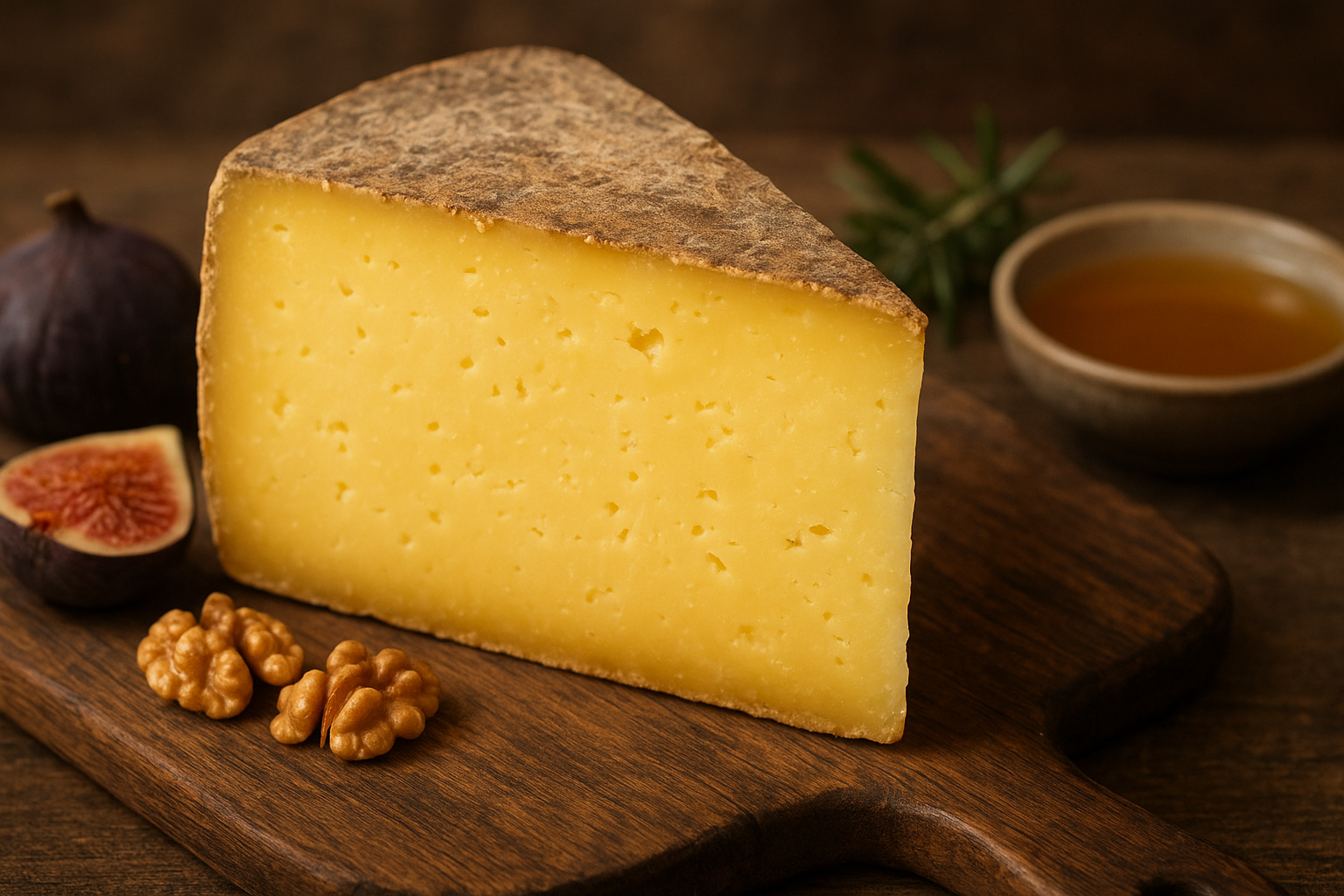In the world of artisan dairy, few creations are as intriguing and mysterious as Grouse Cheese. This unique cheese has captivated food enthusiasts with its distinctive flavor, rustic origin, and rare availability. Unlike mass-produced varieties, artisans craft Grouse Cheese to reflect the landscape, culture, and traditions of cheesemaking. Its name evokes images of open moorlands, grazing animals, and wild natural pastures.
This article explores everything about Grouse Cheese — from its origins, ingredients, and flavor profile to its production methods, health benefits, and culinary uses. It also includes the most searched related keywords like Grouse Cheese recipe, Grouse Cheese flavor, Grouse Cheese nutrition, how to make Grouse Cheese, what is Grouse Cheese, Grouse Cheese taste, Grouse Cheese benefits, and more — ensuring a fully optimized and comprehensive guide.
What Is Grouse Cheese?
Cheesemakers craft Grouse Cheese from the milk of animals that graze on upland pastures, often in regions known for grouse habitats — hence the name. Contrary to what some might think, it does not contain any grouse meat. The cheese gets its name from the landscapes where grouse birds thrive: wild moors, heather fields, and rugged terrains.
The milk used in Grouse Cheese typically comes from cows, sheep, or goats that feed on naturally growing herbs, wildflowers, and grasses. This unique diet infuses the milk with earthy, herbal, and floral notes that define the cheese’s signature flavor.
In short, Grouse Cheese represents the taste of the wilderness — rich, aromatic, and unforgettable.
The Origin and History of Grouse Cheese
The history of Grouse Cheese is rooted in Europe’s highland farming traditions. Cheesemakers living in remote rural areas had to use what nature offered. Cows, sheep, and goats grazed freely on untamed pastures filled with wild herbs and heather. The resulting milk carried the essence of the land — an aroma that became the foundation of Grouse Cheese.
Historically, this cheese was made in small batches, often by families who produced it for their own use. As its popularity grew, local markets began to trade it as a delicacy associated with fine dining and rural craftsmanship.
Grouse Cheese became especially popular among hunters and travelers who paired it with game meat like grouse, venison, or pheasant. This pairing further strengthened the association between the cheese and the wild bird after which it was named.
How Grouse Cheese Is Made
1. Milk Selection
The most critical part of the process is choosing high-quality milk. Farmers select fresh milk from animals that graze naturally in heather-covered highlands or herb-rich meadows. The natural diet gives the milk a complex flavor foundation that defines Grouse Cheese.
2. Curdling the Milk
Once collected, the milk is gently heated and combined with rennet to form curds. Depending on the style, some producers use animal rennet, while others use plant-based coagulants for vegetarian versions.
3. Cutting and Draining
The curds are carefully cut into small cubes to release whey. The size of the curd pieces determines the final texture — smaller curds result in firmer cheese, while larger ones create softer textures.
4. Pressing and Shaping
The curds are pressed into molds to form solid wheels or blocks. During this step, excess whey drains out, and the cheese begins to take shape.
5. Salting and Aging
The cheese is salted either by rubbing salt on the surface or soaking it in brine. Then comes the aging process — the most transformative stage. Grouse Cheese is aged from several weeks to several months in cool, humid cellars, allowing natural molds to develop a flavorful rind.
6. Final Texture and Maturation
During aging, enzymes break down proteins and fats, creating a deep, earthy, and slightly nutty flavor profile. The longer the aging, the sharper and more complex the cheese becomes.
Flavor Profile of Grouse Cheese
The taste of Grouse Cheese is unlike any other. It is often described as earthy, herbal, and slightly tangy, with subtle undertones of wildflowers, nuts, and natural smoke.
The cheese perfectly captures the character of the wilderness — a balance between richness and rustic simplicity.
Key Flavor Notes:
- Earthy and woody, reflecting the soil and pasture
- Slightly nutty and buttery
- Subtle floral aroma from wild herbs
- Tangy yet creamy finish
- Mild saltiness that enhances umami depth
The texture can range from semi-soft and pliable in young cheeses to firm, crumbly, and crystalline in aged versions. When melted, it releases an aromatic richness that pairs well with hearty dishes.
Varieties of Grouse Cheese
Although Grouse Cheese is not mass-produced, several varieties have developed over time depending on milk type and region.
- Cow’s Milk Grouse Cheese – Creamy, buttery texture with a mild herbal flavor.
- Goat’s Milk Grouse Cheese – Tangier, softer, and more aromatic.
- Sheep’s Milk Grouse Cheese’s – Richer, nuttier flavor and firmer texture.
- Mixed Milk Grouse Cheese’s – A balanced, complex taste combining creaminess and tang.
Each version offers a slightly different flavor journey, appealing to diverse palates.
Nutritional Value and Health Benefits
Grouse Cheese’s isn’t just delicious — it’s nutritious too. It contains high-quality proteins, healthy fats, calcium, and essential vitamins.
Nutritional Composition (per 100g):
- Calories: 370 kcal
- Protein: 25g
- Fat: 31g
- Calcium: 720mg
- Vitamin A, D, and B12: Present in high amounts
Health Benefits:
- Rich in Protein: Supports muscle repair and energy.
- High in Calcium: Strengthens bones and teeth.
- Contains Healthy Fats: Provides essential omega fatty acids.
- Boosts Immunity: Raw-milk versions contain beneficial bacteria.
- Improves Gut Health: Naturally aged cheeses often include probiotics.
- Provides Long-Lasting Energy: Ideal for outdoor workers or athletes.
However, because Grouse Cheese’s is dense and flavorful, moderation is recommended.
How to Serve and Enjoy Grouse Cheese’s
1. On a Cheese Board
Serve Grouse Cheese’s at room temperature with crackers, dried fruits, figs, walnuts, and honey. Its earthy notes balance beautifully with sweet or nutty accompaniments.
2. With Game Meat
Pair it with roasted grouse, pheasant, duck, or venison. The cheese’s wild, herbal tones complement the richness of game meats perfectly.
3. In Cooking
Use shredded Grouse Cheese’s in baked dishes, melted over potatoes, or stirred into risotto and pasta. It adds depth to sauces and soups.
4. With Beverages
- Red Wine: Merlot, Cabernet Sauvignon
- Whisky: Peated Scotch for smoky harmony
- Beer: Dark ale or porter complements the earthy notes
- Cider: Refreshing contrast to the richness
5. Simple Snacks
Enjoy with fresh apples, pears, or grapes for a balanced snack that combines sweetness and saltiness.
Grouse Cheese’s Recipe: Rustic Wild Cheese’s Board
Here’s a simple gourmet setup to highlight Grouse Cheese’s:
Ingredients:
- 200g Grouse Cheese’s (aged or semi-aged)
- 1 handful walnuts or hazelnuts
- 2 tablespoons honey
- Fresh figs or dried apricots
- Crusty bread or oat crackers
- A small glass of Scotch or dark ale
Instructions:
- Bring Grouse Cheese’s to room temperature.
- Slice into wedges or cubes.
- Arrange with fruits and nuts.
- Drizzle honey over the cheese just before serving.
- Enjoy slowly, savoring every earthy, nutty note.
This simple platter transforms Grouse Cheese’s into a centerpiece of flavor and storytelling.
Storage and Preservation Tips
To keep Grouse Cheese’s at its best, follow these care guidelines:
- Temperature: Store between 5°C and 10°C.
- Packaging: Wrap in cheese paper or parchment (not plastic) to let it breathe.
- Avoid Freezing: Freezing ruins texture and flavor.
- Shelf Life: Aged cheeses last several weeks if stored properly.
- Rejuvenation Tip: If slightly dry, wrap in damp paper towel for 30 minutes before serving.
Proper storage ensures that Grouse Cheese’s retains its authentic aroma and texture.
Why Grouse Cheese’s Is Unique
Several factors set Grouse Cheese’s apart from other artisanal varieties:
- Wild Pasture Influence: Its flavor comes from the natural herbs and wild grasses eaten by the grazing animals.
- Heritage Craftsmanship: Made using traditional hand methods rather than industrial machines.
- Seasonal Production: Often produced in small batches during certain months, depending on milk quality.
- Terroir Expression: Each batch tastes different, reflecting local climate and flora.
- Versatile Flavor: Works equally well as a gourmet delicacy or rustic comfort food.
This combination of natural environment, tradition, and craft makes Grouse Cheese a symbol of pure artisanal quality.
Popular Myths About Grouse Cheese
Myth 1: It’s Made from Grouse Meat
Fact: Grouse Cheese’s is purely dairy-based. Its name is inspired by the landscapes where grouse birds live.
Myth 2: It Has an Overpowering Flavor
Fact: The flavor is bold yet balanced, earthy but not overwhelming.
Myth 3: It’s Too Rare to Find
Fact: While limited in production, Grouse Cheese’s is available through select artisan cheesemakers and gourmet markets.
Myth 4: It’s Only for Game Dishes
Fact: Grouse Cheese’s pairs beautifully with vegetarian dishes, fruits, and wines too.
Environmental and Ethical Aspects
Modern producers of Grouse Cheese’s emphasize sustainable farming and animal welfare. The grazing systems promote biodiversity, protect soil health, and maintain traditional rural livelihoods. By supporting Grouse Cheese’s, consumers also support eco-friendly agriculture that respects nature’s cycles.
Key sustainable features include:
- Free-range grazing
- Non-GMO, pesticide-free pastures
- Limited use of industrial additives
- Preservation of traditional cheesemaking skills
This sustainable approach not only enhances flavor but also aligns with modern ethical food choices.
Market Demand and Availability
As more consumers seek authentic, handcrafted foods, Grouse Cheese demand is rising. It’s a favorite in fine dining, gourmet stores, and among food connoisseurs. Due to its artisanal production, it remains limited in quantity, which adds to its exclusivity.
You may find Grouse Cheese at:
- Specialty cheese shops
- Farmers’ markets
- Gourmet food festivals
- Artisan dairies
Because of its rarity, prices are higher than average cheeses — but so is its flavor and craftsmanship.
Read More: https://workdaily.co.uk/map-2-0-post-assessment-answers/
Conclusion
Grouse Cheese is more than just a cheese — it’s a symbol of nature, tradition, and artistry. From its earthy aroma to its wild, herbal taste, it embodies the spirit of the highlands and the dedication of skilled cheesemakers.
Whether you enjoy it on a cheese platter, melted over a rustic dish, or paired with a fine drink, Grouse Cheese delivers a sensory experience that few cheeses can match. Its story, rooted in wild pastures and ancient craft, makes it one of the most fascinating cheeses in the world.
If you ever get a chance to taste Grouse Cheese’s, savor it slowly. You’re not just eating cheese — you’re tasting the landscape, the air, and the centuries-old art of cheesemaking.




